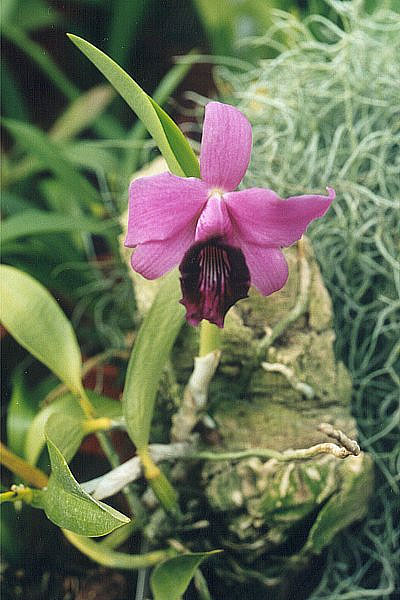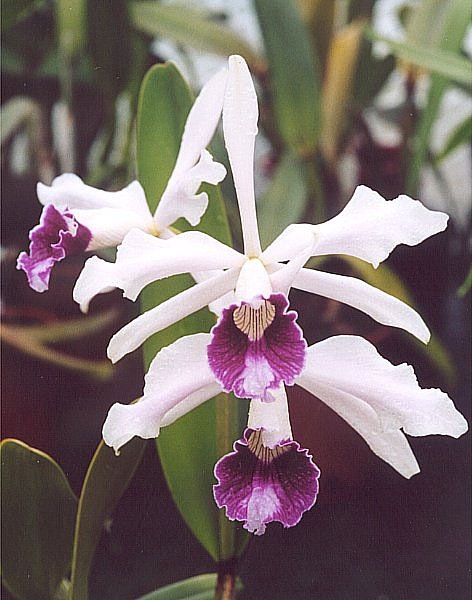SophronitisSophronitis is a genus of small, epiphytic or lithophytic orchids, growing in the damp montane forest of eastern Brazil, Paraguay and NE Argentina. Currently, 65 species are recognized. Sophronitis species are widely known for their red flowers, particularly Sophronitis coccinea, and large flowered species Sophronitis purpurata. They have short, ovoid, often densely clustered, pseudobulbs along the rhizome, in which grows a single, or rarely two, apical, erect, fleshy, gray green leaves. The leaf gives rise to a terminal inflorescence with one to eight flowers. Sometimes this inflorescence is subtended by a spathaceous bract, sometimes erroneously called spathe (spathe is a typical form in some other families such as Araceae and Arecaceae). The flowers have similarly shaped sepals and petals, and can be yellow, pink, lavender, magenta, orange and red. The trilobed lip has lateral lobes that partially encircle the column. The smaller midlobe has a yellow disc and the spur is adnate to the ovary. The lip often presents some lamellate calli. Some species are yellow, and almost all species have some shades of orange due to natural variation within the species. They are used extensively in hybridization to influence the small size and the dark red color of the progeny, such as in the hybrid x Sophrolaeliocattleya (xSlc.) Sophronitis species are quite small, a characteristic that may be conferred to progeny such that they are more compact. This new classification was created by Van den Berg & M.W.Chase in 2000. In addition to the traditional small, red species, it included all Laelia species from Brazil, based on DNA evidence. The Mexican species still are Laelia. From Wikipedia, the free encyclopedia
|
|

